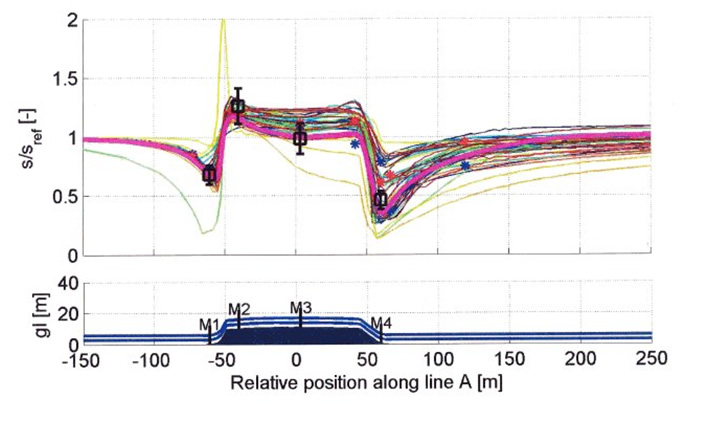Validating CFD`s value
Validating CFD’s Value
… continued from WindSim | Newsletter | Winter 2009
How good is CFD? How accurate is it? Is it better than the traditional linear methods?
We get these questions every day.
The people who ask often want straightforward and simple answers. It’s tempting for us to reply “CFD is the best” when pressed for a short, simple answer to such questions. However, oversimplification is reckless when dealing with complex phenomenon such as the variation of wind in space and time.
Let’s start with a brief explanation of why we feel CFD is the best modeling approach and how the value of CFD is being validated today.
The strength of CFD is revealed by looking at its basis. The fundamental equation of fluid flow consists of a set of non-linear partial differential equations, the so-called Navier-Stokes equations. These equations are known to be difficult to solve due to their non-linear nature. Nevertheless, in numerous flow situations—and in various industries over many years—CFD reproduces the measured flow patterns, and is therefore considered a proven method.
What is the status within the wind sector? Local wind fields are turbulent and often influenced by variable density, topography, and vegetation. In principle, CFD can take all these effects into account using fundamental equations. Still, there will always be discrepancies when comparing simulation results and on-site measurements because neither the simulations nor the measurements are always perfect.
Hence, we need a large number of validation cases to distinguish the strengths and the shortcomings of the different wind characterization methods. There are only very few validation cases which are suitable for a proper validation. Typically, a good validation case needs to be well instrumented with good measurement equipment. And, in particular, the conditions along the border of the numerical model must be measured.
Validation is critical with all modeling approaches. WindSim proudly participated in the Bolund experiment, a new validation case undertaken by Risø, and congratulates our fellow contributors.
The CFD methods—including WindSim—showed the lowest errors among the various methods used.

Normalized wind speed at 5 meters height with wind direction from 239 degrees for the Bolund experiment. Measurements are given by black boxes. The solid pink line shows the WindSim results. The other lines are results from other methods.
The challenge is passed over to the wind sector—it is only the sector itself that can make CFD a proven method for the design of more profitable wind farms.
